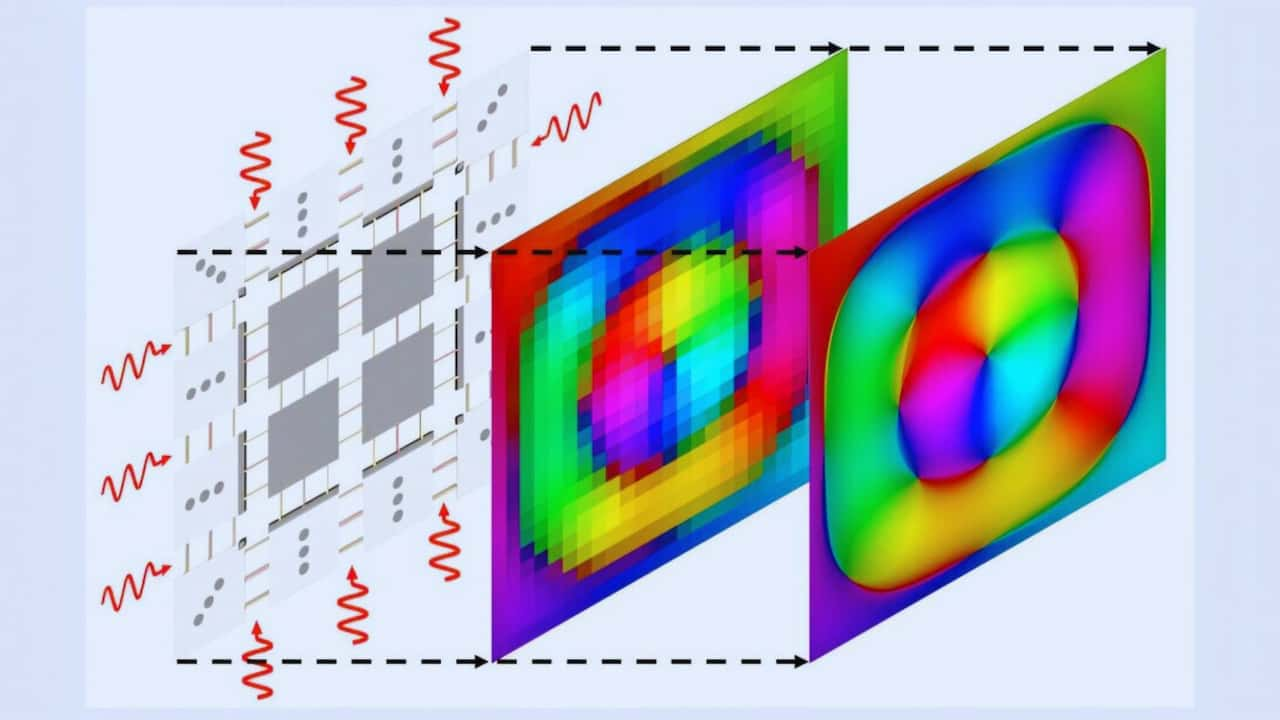Breakthrough: Light-Speed Computing Revolution Transforms Complex Problem-Solving
Newcastle University scientists have unveiled a groundbreaking computing method that uses electromagnetic waves to solve complex mathematical problems at unprecedented speeds. This innovation could revolutionize how we tackle challenging calculations across multiple fields.
Dr. Victor Pacheco-Peña and his team have developed a system that works at the speed of light—quite literally. Published in Advanced Photonics Nexus, their research demonstrates how light waves can solve complex math problems that traditional computers find challenging.
“We’re opening doors to solving problems faster than ever,” says Dr. Pacheco-Peña. “These devices can quickly find answers to complex equations that usually take regular computers much longer to solve.”
The team created a clever network of light-guiding channels filled with special materials. Think of it as a highly advanced circuit board, but instead of electricity, it uses light. A metatronic network functions akin to a specialized calculator, operating at the speed of light.
The real magic happens when dealing with partial differential equations (PDEs). These equations help scientists understand everything from how heat moves through materials to how waves travel through water. While they’re crucial for understanding our world, they’re notoriously difficult to solve.
Traditional computers often struggle with these equations, sometimes taking hours or even days to find solutions. The new light-based system completely revolutionizes this. By using electromagnetic waves, it can process these calculations almost instantly.
The system works by:
- Channeling light through specially designed pathways
- We employ materials capable of precisely bending and shaping light.
- We transform intricate mathematical problems into patterns of light.
- Reading the results of how the light behaves.
- Speed: We solve problems at the speed of light.
- Efficiency: Uses less power than traditional computing methods
- Versatility: The ability to handle various types of complex equations
- Accuracy: Offers dependable resolutions to challenging issues
This technology could be beneficial in numerous real-world applications.
- Better weather forecasting
- More efficient drug development
- Improved aerospace design
- Faster financial modeling
“We’re just scratching the surface of what’s possible,” Dr. Pacheco-Peña explains. “This technology could transform how we approach complex problem-solving across many fields.”
The team continues to refine their system, working to make it even more efficient and applicable to a wider range of problems. As this technology develops, it could mark the beginning of a new era in computing—one where the speed of light isn’t just a physical constant but the speed at which we solve some of our most challenging problems.
The very light that powers these revolutionary calculations is illuminating the future of computing, making it look brighter than ever.
